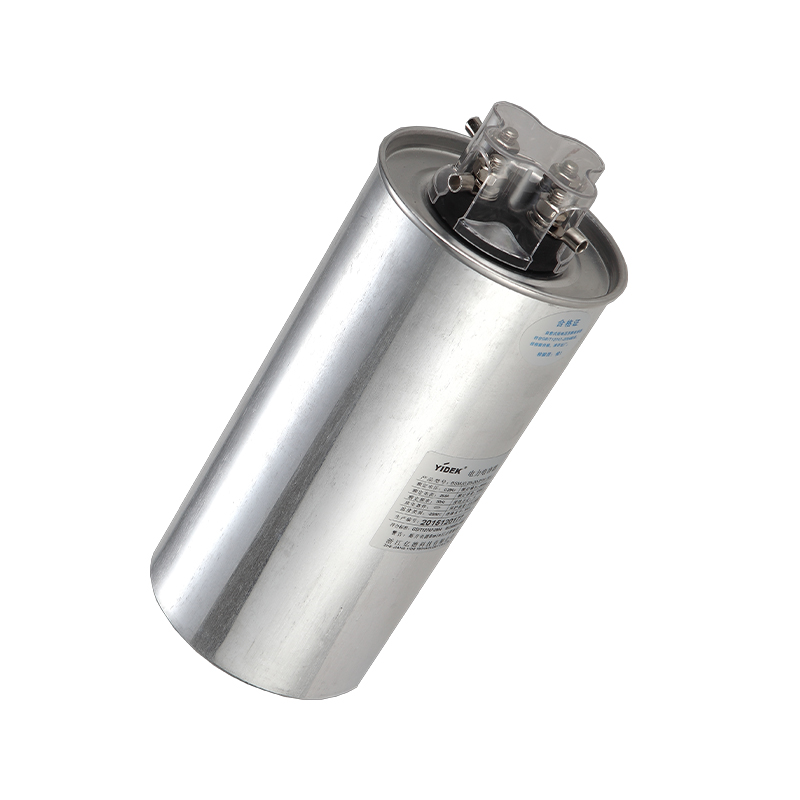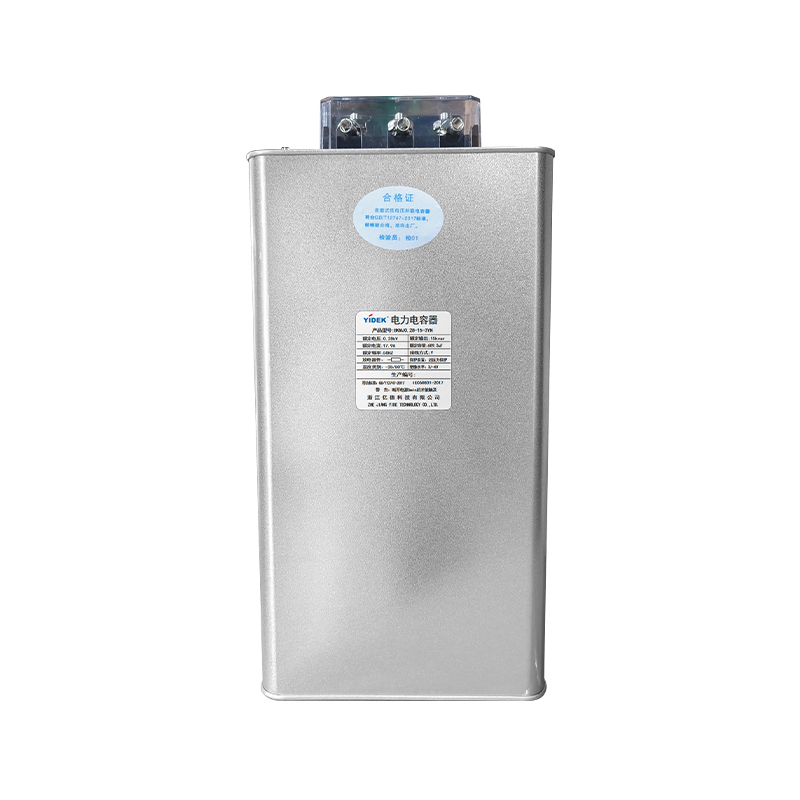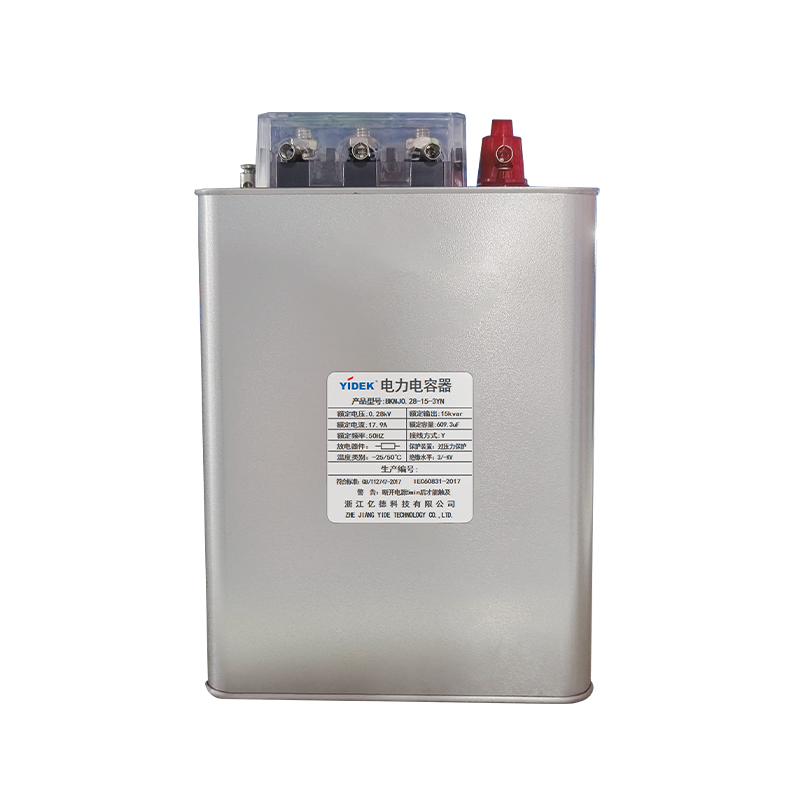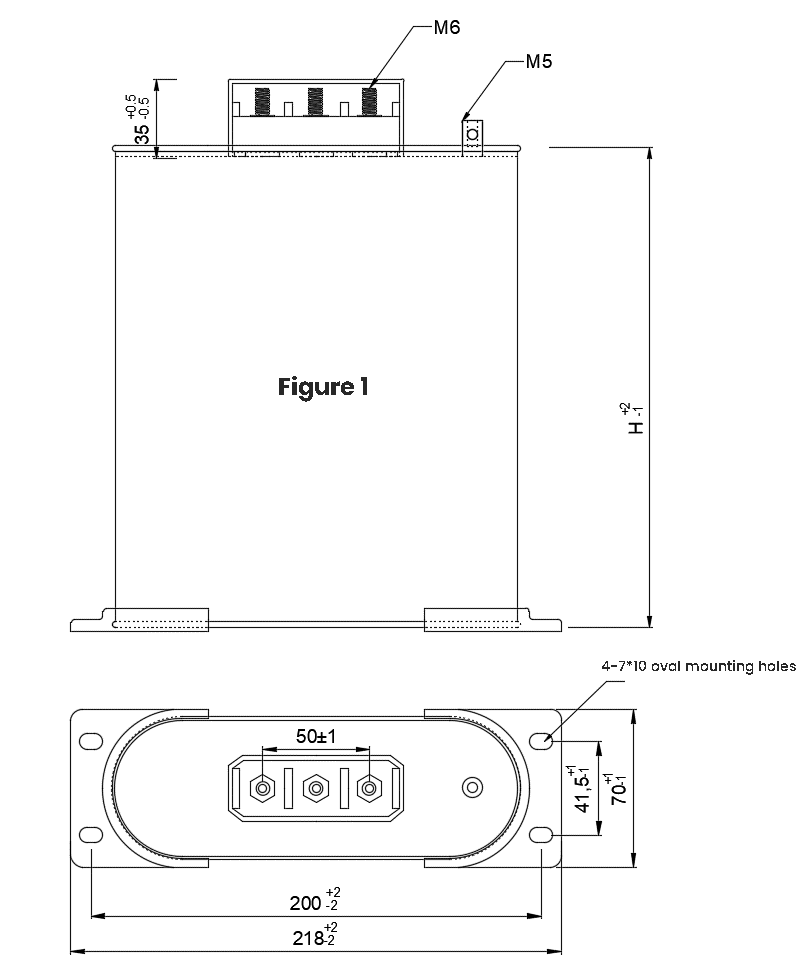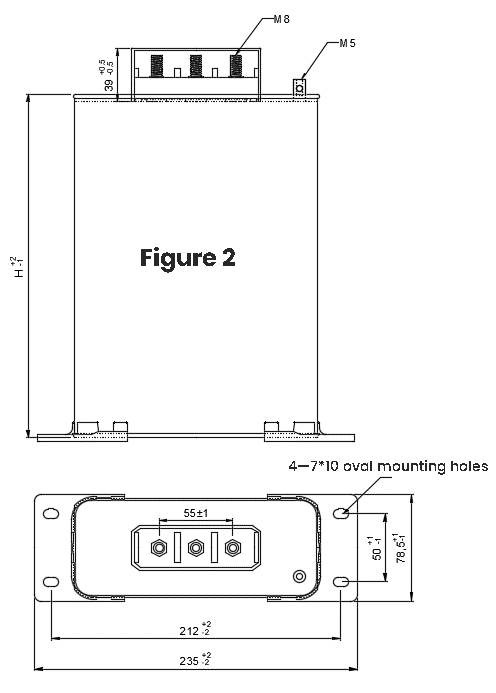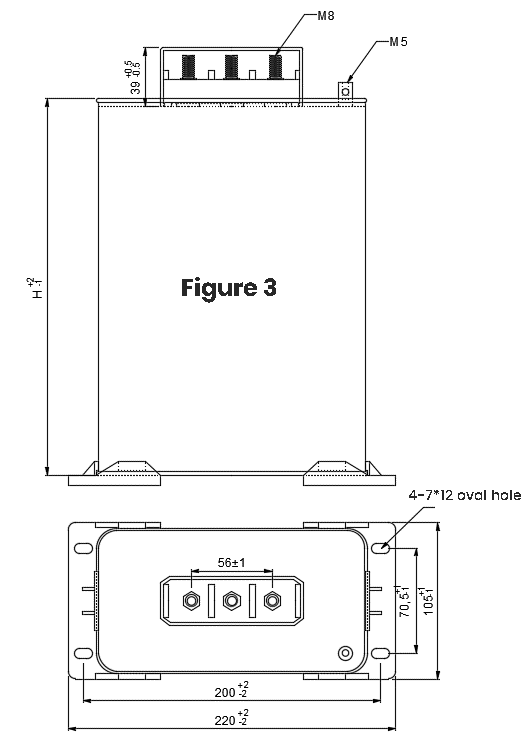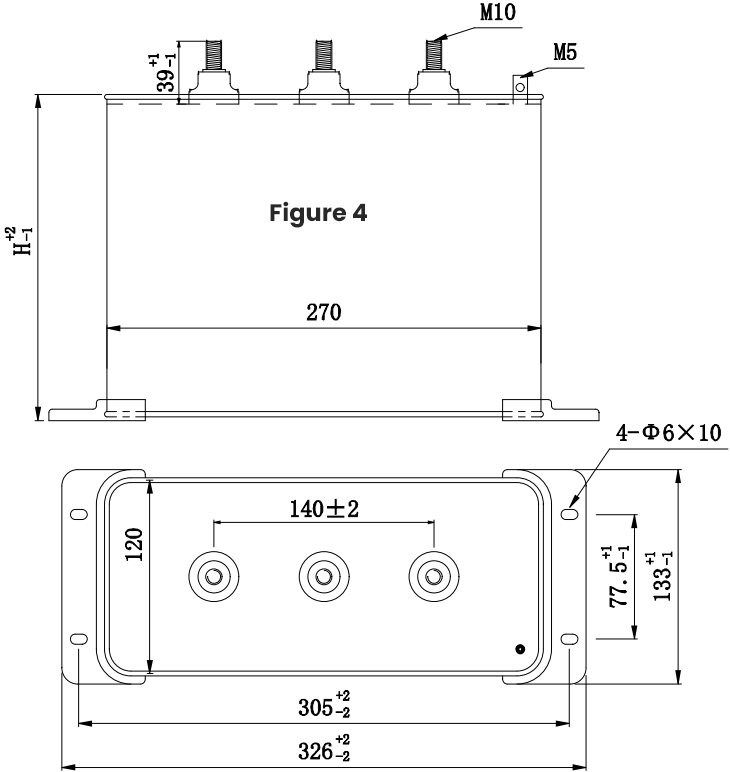7.Environment Temp:Ambient air temperature |
Cat | Max | Avg Max in 24H | Avg Max in a Year |
C | 50 | 40 | 30 |
Operation and removal of capacitor
1、Before cutting off the power switch of the equipment, be sure to cut off the power supply of the capacitor, otherwise it will not only be harmful to the capacitor, but also have a negative impact on the power supply.
2、After the capacitor is cut off, it can be put into operation again after the capacitor is fully discharged (150 seconds).
3、When the load is reduced at night, in order to prevent the capacitor from bearing too high network voltage, some or all capacitors should be removed from the line.
Precautions during capacitor operation
1. Capacitors shall not be installed in places where there is much rain, water dripping, conductive dust or corrosive gas emission.
2. The capacitor should be installed in a well-ventilated and easily radiating place. When installing more than two capacitors, the spacing should be more than 50 mm, and pay full attention to the ambient air temperature, avoid direct sunlight as much as possible, and do a good job of ventilation and heat dissipation.
3. The capacitor terminals must be kept in good contact. They should be checked at least once after the first 24 hours of operation, and then regularly every 3 months to ensure good contact.
4. Regularly check the current of each phase of a single capacitor to see if it is significantly different from the nominal current (more than 15%). If any abnormal phenomenon is found, check the corresponding circuit and eliminate it in time, or contact our company.
5. Check the operating temperature of the capacitor regularly. If the temperature rise of individual capacitors is too high, replace the capacitor or contact our company.
6. The automatic switching device using self-healing capacitors must adopt a cyclic switching mechanism to prevent repeated switching on one or two groups of capacitors. At the same time, a switching circuit should be installed, and the switching delay time should not be less than 150s.
7. Automatic switching equipment shall have measures to reduce inrush current. The common method is to add appropriate reactors or use special contactors, preferably using composite switches. No matter what method is adopted, the inrush current of capacitor shall not be higher than 50In, preferably less than 20In.
8. The automatic switching equipment shall have harmonic over-value protection or capacitor over-current protection to prevent harmonic damage to the capacitor, which should be paid enough attention by users.
9. For the self-healing capacitor that is manually switched, attention should be paid not to operate repeatedly and instantaneously. The interval between operations should not be less than 150s, and the total number of switching times per year should not exceed 5000.
Maintenance:
1. Current inspection: the inspection cycle shall be formulated in combination with the use situation. According to the international standard, the capacitor unit shall be suitable for continuous operation under the current generated by the unit under the rated sinusoidal voltage and rated frequency with the root-mean-square value of the line current of 1.3 times, except for the transient process. Considering the capacitance deviation, the maximum capacitance can reach 1.10Cn, so the maximum current can reach 1.43In (these overcurrent factors are the result of considering the combined effect of harmonics, overvoltage and capacitance deviation). When the current exceeds the above value, stop the operation, find out the cause, or contact our company.
2. Temperature rise inspection: If the temperature rise of individual capacitor is found to be too high (more than 30 ℃ higher than the ambient temperature in summer, more than 40 ℃ higher than the ambient temperature in winter), replace the capacitor or contact the company. If the temperature rise of all capacitors is found to be too high, determine whether it is caused by improper use, improve the use environment and find out the cause.
3. Shell inspection: if there is black smoke or hole in the shell, replace the capacitor immediately. If the shell bulge is found, it indicates that the capacitor has failed, and the capacitor should be replaced.
4. Screw inspection: any poor contact in the circuit of the capacitor cabinet will cause arc and high-frequency oscillation, which will cause overheating and overstress of the capacitor. Therefore, all contacts of the capacitor device should be checked regularly.

